용융 금속 증착(MMD) 개요
용융 금속 증착 (MMD)는 복잡하고 고성능 금속 부품을 제작하는 데 사용되는 최첨단 적층 제조 기술입니다. 이 공정은 용융 금속 층을 증착하여 구성 요소를 처음부터 구축하여 비교할 수 없는 정밀도와 강도를 제공합니다. MMD는 복잡하고 견고한 부품에 대한 수요가 끊임없이 증가하는 항공우주, 자동차 및 의료와 같은 산업에서 특히 가치가 있습니다.
이 가이드에서는 MMD에 사용되는 금속 분말의 종류, 특성, 응용 분야 등을 포함하여 MMD의 세부 사항을 자세히 살펴보겠습니다. 마지막으로 MMD가 제조를 혁신하는 이유와 다양한 산업에 어떻게 적용할 수 있는지에 대한 완벽한 이해를 갖게 될 것입니다.
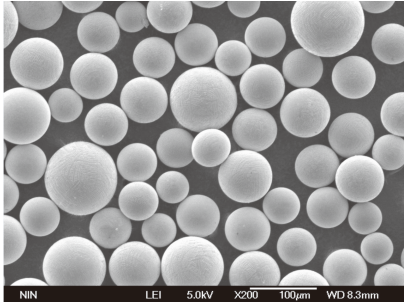
MMD에 사용되는 금속 분말의 종류
특정 응용 분야에 적합한 재료를 선택하려면 MMD에 사용되는 다양한 금속 분말을 이해하는 것이 중요합니다. 다음은 MMD에 일반적으로 사용되는 10가지 특정 금속 분말 모델과 해당 조성 및 특성에 대한 자세한 개요입니다.
| 금속 분말 모델 | 구성 | 속성 | 특성 |
|---|---|---|---|
| 티타늄 Ti-6Al-4V | 90% 티타늄, 6% 알루미늄, 4% 바나듐 | 높은 중량 대비 강도, 내식성 | 항공우주 분야에서 널리 사용되며, 의료 임플란트에 생체 적합 |
| 스테인리스 스틸 316L | 철, 크롬, 니켈, 몰리브덴 | 우수한 내식성, 높은 인성 | 해양 및 의료 응용 분야에 이상적 |
| 알루미늄 AlSi10Mg | 알루미늄, 실리콘, 마그네슘 | 가볍고 우수한 열적 특성 | 자동차 및 항공우주 부품에 적합 |
| 인코넬 718 | 니켈, 크롬, 철, 니오브 | 고온 저항성, 우수한 내산화성 | 가스 터빈 및 로켓 엔진에 사용 |
| 코발트-크롬 | 코발트, 크롬 | 높은 내마모성 및 내식성, 생체 적합성 | 치과 및 정형외과 임플란트에 흔히 사용됨 |
| 공구강 H13 | 철, 크롬, 몰리브덴, 바나듐 | 높은 경도와 인성 | 플라스틱 사출 성형용 금형 및 다이에 사용 |
| 구리 CuNi2SiCr | 구리, 니켈, 실리콘, 크롬 | 높은 열 및 전기 전도성 | 전기 부품 및 열교환기에 사용 |
| 마레이징 스틸 (1.2709) | 철, 니켈, 코발트, 몰리브덴 | 초고강도, 우수한 인성 | 툴링 및 고성능 부품에 사용 |
| 니켈 합금 625 | 니켈, 크롬, 몰리브덴, 니오븀 | 우수한 내식성 및 내산화성 | 해양 및 화학 공정에 이상적 |
| 청동 CuSn10 | 구리, 주석 | 우수한 내마모성, 주조 용이성 | 베어링, 부싱 및 예술 조각품에 사용 |
애플리케이션 용융 금속 증착 (MMD)
MMD의 다재다능함은 광범위한 응용 분야에 적합하게 만듭니다. 다음은 다양한 산업 분야에서 MMD의 다양한 응용 분야를 요약한 표입니다.
| 산업 | 애플리케이션 | 혜택 |
|---|---|---|
| 항공우주 | 엔진 부품, 구조 부품 | 경량, 고강도, 복잡한 형상 |
| 자동차 | 엔진 부품, 섀시 부품 | 성능 향상, 무게 감소, 맞춤형 설계 |
| 의료 | 임플란트, 수술 기구 | 생체 적합성, 맞춤화, 신속한 프로토타입 제작 |
| 해양 | 프로펠러, 구조 부품 | 내식성, 내구성 |
| 에너지 | 터빈 블레이드, 열교환기 | 고온 저항성, 효율성 |
| 전자 제품 | 커넥터, 방열판 | 높은 전도성, 정밀도 |
| 툴링 | 금형, 다이 | 고강도, 내마모성, 정밀도 |
| 예술 및 보석 | 조각품, 맞춤형 보석 | 복잡한 디자인, 다양한 재료 |
| 산업 장비 | 기계 부품, 기어 | 내구성, 강도, 맞춤형 솔루션 |
| 건설 | 구조 요소, 패스너 | 강도, 내식성, 복잡한 형상 |
사양, 크기, 등급 및 표준
MMD의 일관성과 품질을 보장하기 위해 특정 표준, 크기 및 등급이 준수됩니다. 다음 표는 이러한 사양을 간략하게 설명합니다.
| 재료 | 사양 | 크기(mm) | 성적 | 표준 |
|---|---|---|---|---|
| 티타늄 Ti-6Al-4V | ASTM B348, AMS 4911 | 1-50 | 5학년 | ASTM, AMS, ISO |
| 스테인리스 스틸 316L | ASTM A240, AMS 5507 | 0.5-100 | 316L 등급 | ASTM, AMS, ISO |
| 알루미늄 AlSi10Mg | EN 1706, ISO 3522 | 0.5-50 | AlSi10Mg | EN, ISO |
| 인코넬 718 | AMS 5662, ASTM B637 | 1-50 | UNS N07718 | AMS, ASTM |
| 코발트-크롬 | ASTM F75, ISO 5832-4 | 1-20 | CoCrMo | ASTM, ISO |
| 공구강 H13 | ASTM A681, SAE J437 | 1-100 | H13 | ASTM, SAE |
| 구리 CuNi2SiCr | DIN 17670, ASTM B505 | 0.5-100 | CuNi2SiCr | DIN, ASTM |
| 마레이징 스틸 (1.2709) | AMS 6514, DIN 1.2709 | 1-50 | 300등급 | AMS, DIN |
| 니켈 합금 625 | AMS 5599, ASTM B443 | 1-50 | UNS N06625 | AMS, ASTM |
| 청동 CuSn10 | ASTM B505, SAE J461 | 1-100 | CuSn10 | ASTM, SAE |
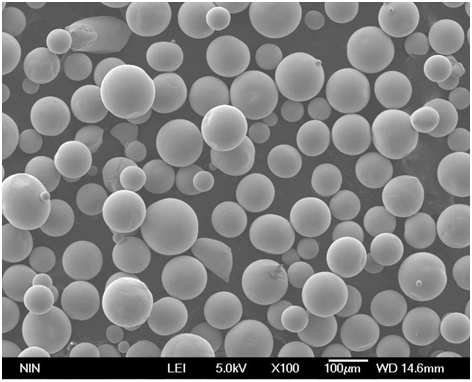
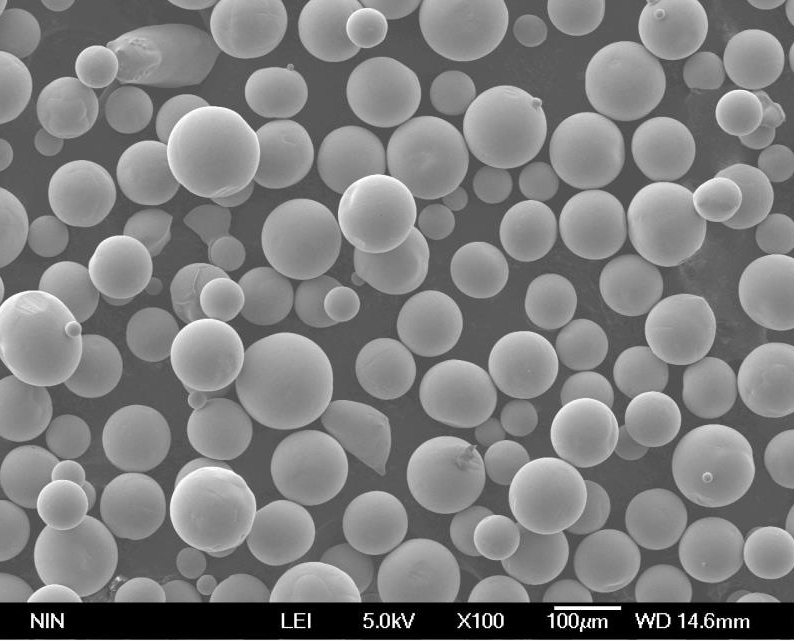

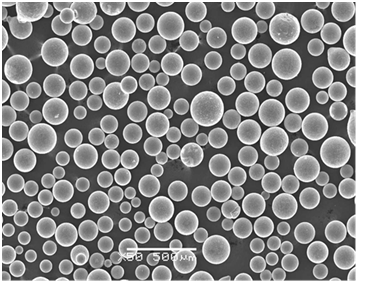
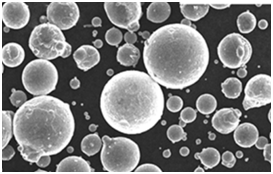

공급업체 및 가격 세부 정보
MMD에서 금속 분말을 어디에서 조달하고 비용이 얼마인지 아는 것은 예산 책정 및 계획에 매우 중요합니다. 다음은 공급업체 및 가격 책정에 대한 세부 정보가 포함된 표입니다.
| 공급업체 | 위치 | 사용 가능한 자료 | 가격(USD/kg) |
|---|---|---|---|
| EOS GmbH | 독일 | Ti-6Al-4V, 316L, AlSi10Mg, 인코넬 718 | 150-400 |
| 카펜터 기술 | 미국 | 코발트-크롬, H13, 마레이징 강 | 200-500 |
| 샌드빅 | 스웨덴 | 316L, CuNi2SiCr, 인코넬 625 | 100-300 |
| AP&C | 캐나다 | Ti-6Al-4V, 316L, AlSi10Mg | 180-350 |
| GKN 회가나에스 | 미국 | 청동 CuSn10, 316L, 마레이징 강 | 120-400 |
| 프렉스에어 | 미국 | Ti-6Al-4V, 316L, 인코넬 718, CuNi2SiCr | 200-450 |
| 호가나스 AB | 스웨덴 | 스테인리스강, 공구강, 청동 | 150-400 |
| LPW 기술 | UK | 316L, AlSi10Mg, 인코넬 625 | 180-360 |
| Arcam AB | 스웨덴 | Ti-6Al-4V, CoCrMo, 인코넬 718 | 250-500 |
| 텍나 플라즈마 시스템 | 캐나다 | 316L, Ti-6Al-4V, 인코넬 718 | 200-450 |
MMD의 장점과 제한 사항
모든 기술에는 장단점이 있습니다. 다음은 MMD의 장점과 제한 사항에 대한 자세한 비교입니다.
| 측면 | 장점 | 제한 사항 |
|---|---|---|
| 정밀도 | 복잡한 형상을 생성하는 높은 정확도 | 정밀한 제어 및 보정이 필요함 |
| 머티리얼 속성 | 우수한 기계적 특성 및 성능 | 특정 금속 및 합금으로 제한 |
| 사용자 지정 | 고도로 맞춤화 가능한 설계 | 설계 복잡성으로 인해 비용과 시간이 증가할 수 있음 |
| 속도 | 소규모에서 중간 규모 배치에 대한 빠른 생산 | 대규모 생산에는 더 느림 |
| 비용 | 재료 폐기물 감소, 프로토타입 제작에 비용 효율적 | 장비에 대한 높은 초기 투자 |
| 강도 및 내구성 | 강하고 내구성이 뛰어난 부품 생산 | 일부 재료는 후처리가 필요할 수 있음 |
| 지속 가능성 | 최소 폐기물, 재활용 가능한 재료 | 에너지 집약적인 프로세스 |
| 다용도성 | 다양한 산업 분야에서 광범위한 응용 분야 | 모든 유형의 구성 요소에 적합하지 않음 |
| 통합 | 다른 제조 공정과 통합 가능 | 전문적인 지식과 기술이 필요함 |
| 혁신 | 혁신적인 설계 및 신속한 프로토타입 제작 가능 | 현재 기술 발전으로 제한됨 |
주요 특징 용융 금속 증착 (MMD)
MMD를 고유하고 가치 있는 제조 공정으로 만드는 주요 특징을 살펴보겠습니다.
정밀도 및 정확성
MMD의 뛰어난 특징 중 하나는 정밀도입니다. MMD는 용융 금속을 층별로 증착하여 기존 방법으로는 놓칠 수 있는 복잡한 세부 사항을 얻을 수 있습니다. 이러한 높은 수준의 정확성은 항공우주 또는 의료 응용 분야와 같이 약간의 편차라도 심각한 문제로 이어질 수 있는 산업에 필수적입니다.
소재의 다양성
MMD는 다양한 금속 및 합금과 호환되며 각 금속 및 합금은 고유한 특성을 제공합니다. 티타늄의 높은 강도 대 중량비 또는 스테인리스강의 우수한 내식성이든, MMD는 다양한 요구 사항을 충족할 수 있으므로 매우 다재다능한 제조 기술이 됩니다.
강도 및 내구성
MMD를 통해 생산된 구성 요소는 우수한 강도와 내구성으로 유명합니다. 이는 부품이 극한의 조건에 노출되고 시간이 지남에 따라 무결성을 유지해야 하는 자동차 및 항공우주와 같은 산업에서 특히 유용합니다.
맞춤화 및 유연성
MMD를 사용하면 상당한 맞춤화가 가능하여 제조업체가 특정 요구 사항에 맞게 부품을 생산할 수 있습니다. 이러한 유연성은 맞춤형 의료 임플란트 또는 특수 항공우주 부품과 같이 맞춤형 솔루션이 필요한 응용 분야에서 매우 중요합니다.
효율성 및 지속 가능성
MMD는 부품을 만드는 데 필요한 재료만 사용하므로 폐기물을 최소화하는 효율적인 공정입니다. 또한 MMD에 사용되는 많은 재료는 재활용이 가능하여 제조 공정의 지속 가능성에 기여합니다.
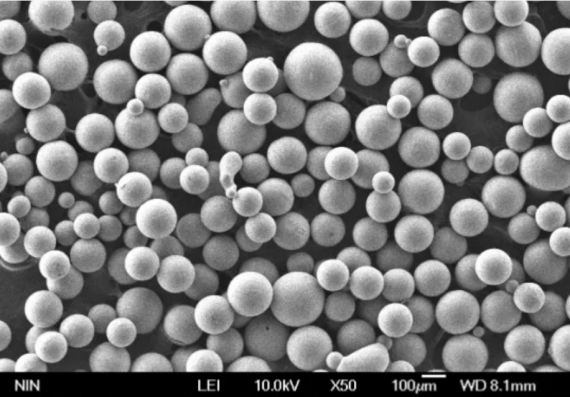
자주 묻는 질문
용융 금속 증착(MMD)이란 무엇입니까?
Q: 용융 금속 증착(MMD)이란 정확히 무엇입니까?
A: 용융 금속 증착(MMD)은 용융 금속을 사용하여 층별로 금속 부품을 제작하는 적층 제조 공정입니다. 정밀하고 복잡한 형상과 고성능 부품을 허용합니다.
MMD는 다른 적층 제조 방법과 어떻게 비교됩니까?
Q: MMD는 다른 3D 프린팅 기술과 어떻게 다릅니까?
A: 다른 플라스틱이나 레진을 사용하는 다른 적층 제조 방법과 달리 MMD는 금속을 사용하여 뛰어난 강도와 내구성을 제공합니다. 고성능 금속 부품이 필요한 응용 분야에 특히 유용합니다.
MMD에서 어떤 재료를 사용할 수 있습니까?
Q: MMD에서 일반적으로 사용되는 금속 및 합금 유형은 무엇입니까?
A: MMD에 사용되는 일반적인 금속에는 티타늄 Ti-6Al-4V, 스테인리스강 316L, 알루미늄 AlSi10Mg, Inconel 718 및 코발트-크롬 등이 있습니다. 각 재료는 다양한 응용 분야에 적합한 고유한 특성을 제공합니다.
MMD 사용의 장점은 무엇입니까?
Q: 제조에 MMD 사용을 고려해야 하는 이유는 무엇입니까?
A: MMD는 높은 정밀도, 우수한 재료 특성, 맞춤화, 효율성 및 지속 가능성을 제공합니다. 복잡하고 고성능 부품을 생산하는 데 특히 유용합니다.
MMD에 제한 사항이 있습니까?
Q: MMD의 단점이나 제한 사항은 무엇입니까?
A: MMD는 매우 다재다능하고 정밀하지만 설정 비용이 많이 들고 전문적인 지식이 필요할 수 있습니다. 또한 모든 유형의 구성 요소에 적합하지 않을 수 있으며 일부 재료는 후처리가 필요할 수 있습니다.
MMD를 어떻게 시작할 수 있습니까?
Q: 프로젝트에 MMD를 사용하려면 무엇이 필요합니까?
A: MMD를 시작하려면 MMD 기계, 적절한 금속 분말, 공정에 대한 지식이 필요합니다. 숙련된 공급업체 및 제조업체와 협력하면 MMD 채택을 간소화하는 데 도움이 될 수 있습니다.
MMD용 금속 분말은 어디에서 구할 수 있습니까?
Q: MMD용 금속 분말은 어디에서 구매할 수 있으며 무엇을 고려해야 합니까?
A: MMD용 금속 분말은 EOS GmbH, Carpenter Technology 및 Sandvik과 같은 공급업체에서 구할 수 있습니다. 선택할 때 재료 특성, 비용 및 공급업체 신뢰성과 같은 요소를 고려하십시오.

